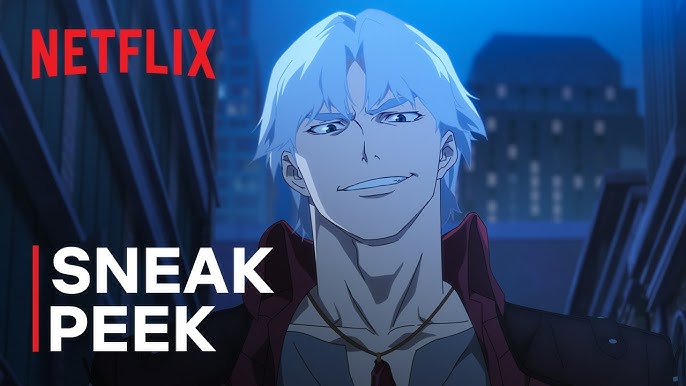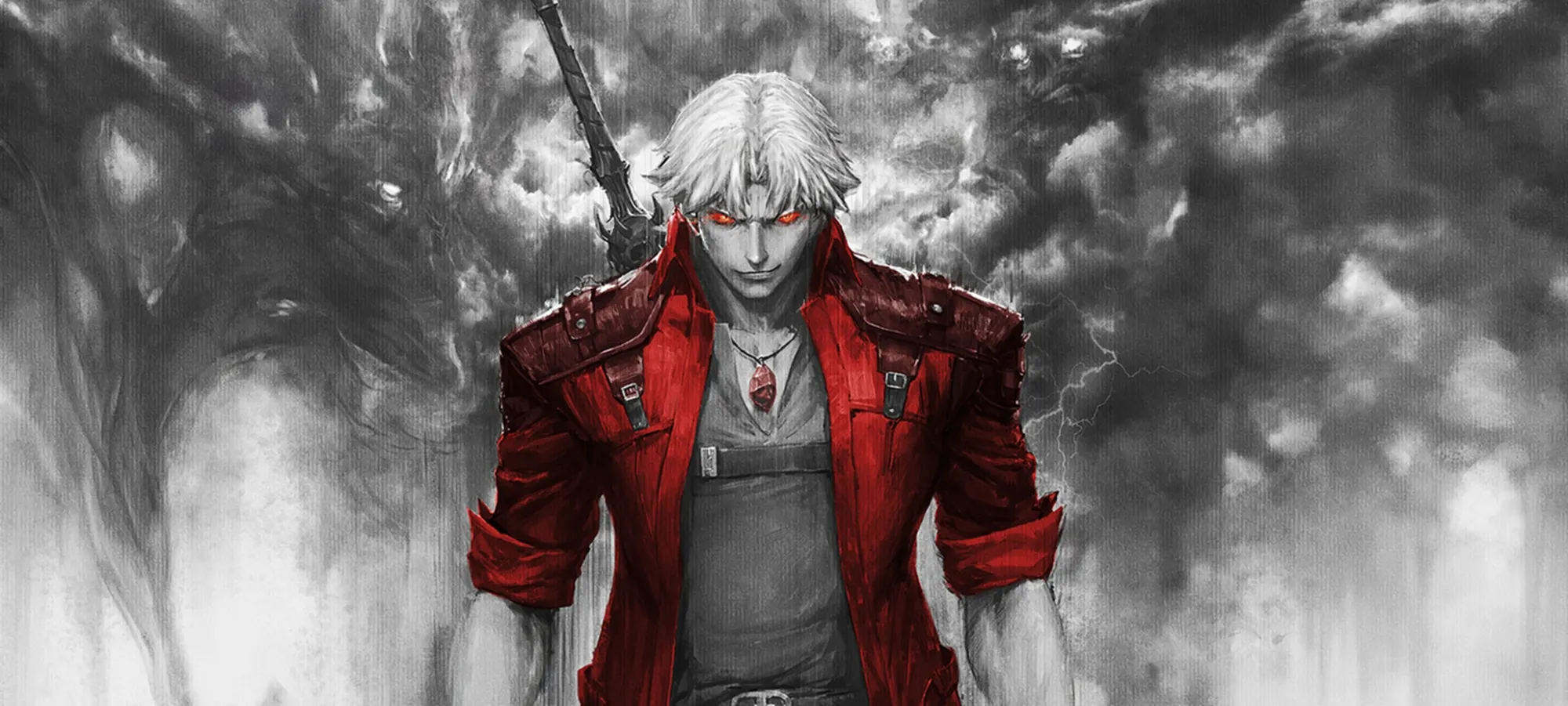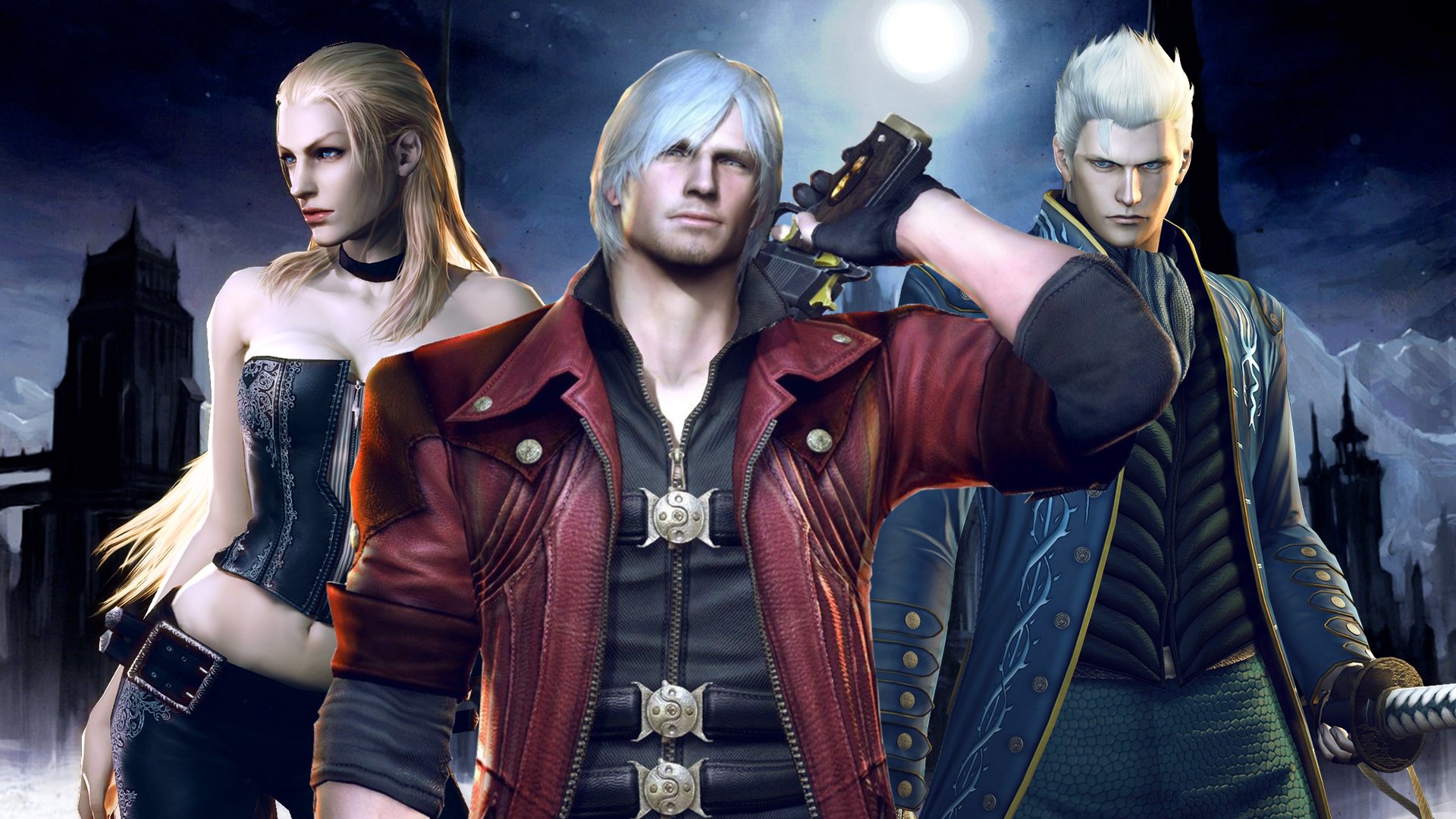Picture this: You're standing in a crumbling cathedral, silver hair flowing dramatically as demons pour through portals around you. With twin pistols blazing and a massive sword on your back, you launch into combat with the kind of over-the-top flair that would make action movie heroes weep with envy. Welcome to the world of Devil May Cry, where being stylish isn't just encouraged—it's literally how the game scores you.
_eOEV1ax.jpg)
What Makes Devil May Cry Special?
Devil May Cry isn't just another hack and slash game—it's the series that practically invented the "stylish action" genre. Created by Capcom's legendary Hideki Kamiya, this franchise has been setting the bar for character action games since 2001. But what exactly makes DMC so special?
At its heart, Devil May Cry is about making you feel like the coolest person alive. Every sword swing, every gunshot, every gravity-defying combo is designed to make you feel like you're starring in your own supernatural action movie. The game doesn't just want you to defeat enemies—it wants you to do it with such outrageous style that you'll be grinning from ear to ear.
The DNA of Stylish Action
The series revolves around a few core principles that have influenced countless games since:
- Style Over Substance: Sure, you can button-mash your way through fights, but the real joy comes from chaining together elaborate combos that look absolutely spectacular
- Power Fantasy: You're not just fighting demons—you're a half-demon superhero who treats physics as more of a suggestion than a law
- Personality: Dante's cocky one-liners and pizza obsession aren't just quirks—they're integral to the game's irreverent tone
- Mechanical Depth: Beneath all the flashy moves lies a surprisingly deep combat system that rewards mastery and creativity
Meet the Legendary Demon Hunters
Dante: The Original Stylish Slayer
With his white hair, red leather coat, and devil-may-care attitude, Dante is gaming's most iconic demon hunter. Armed with his trusty pistols Ebony and Ivory and the massive Rebellion sword, he approaches demon slaying with the casual confidence of someone ordering pizza. Speaking of which—Dante's love for pizza has become such a defining character trait that it's practically its own meme at this point.

Vergil: The Dark Mirror
Where Dante is laid-back and playful, his twin brother Vergil is focused and ruthless. Wielding the legendary Yamato sword, Vergil represents the series' exploration of sibling rivalry taken to apocalyptic extremes. Their battles aren't just boss fights—they're emotional confrontations between two fundamentally different philosophies about power and responsibility.
Nero: The New Generation
Introduced in Devil May Cry 4, Nero brought fresh energy to the series with his unique Devil Bringer arm and hotheaded personality. His character development journey, particularly in Devil May Cry 5, shows how the series has evolved to explore themes of family, legacy, and finding your own path.
Why Devil May Cry 3 Changed Everything
Ask any fan about the best starting point for newcomers, and they'll likely point you toward Devil May Cry 3. This wasn't just a sequel—it was a complete reinvention that established the template every character action game since has tried to follow.
DMC3 perfected the style ranking system that grades your performance in real-time, encouraging players to experiment with different weapons and techniques. The infamous "SSS" rank became the holy grail for players, achievable only through the most creative and varied combat approaches.
How to Get SSS Rank in Devil May Cry Combos
Pro Tips for Stylish Success:
- Vary your attacks—repeating the same moves will quickly lower your style rating
- Mix guns and melee attacks seamlessly
- Use environmental elements like walls for additional air time
- Master weapon switching mid-combo for maximum variety
- Don't get hit—taking damage will reset your style meter
The Influence on Modern Gaming
Devil May Cry's impact on the gaming industry cannot be overstated. Games like Bayonetta, God of War (2018 onward), and countless indie titles owe a debt to DMC's innovations. The series showed that action games could be both accessible to newcomers and incredibly deep for dedicated players.
Bayonetta vs Devil May Cry: A Natural Evolution
When Hideki Kamiya created Bayonetta after leaving Capcom, he took everything he'd learned from DMC and cranked it up to eleven. While both series share DNA, Bayonetta focuses more on precise timing and dodging, while DMC emphasizes combo creativity and style variety.

Essential Tips for New Players
Jumping into Devil May Cry can feel overwhelming, but here's how to ease into the stylish action:
Best Devil May Cry Game for Beginners
Devil May Cry 5 is arguably the most newcomer-friendly entry. It features excellent tutorials, modern design sensibilities, and three playable characters that each offer different gameplay experiences. Plus, you don't need to know the entire timeline to enjoy the story—though understanding the brother rivalry certainly enhances the experience.
Best Weapons and Upgrades for Newcomers
- Start Simple: Master Dante's basic sword and gun combos before moving to exotic weapons
- Invest in Health: Blue Orbs should be your first priority for survivability
- Learn One Character Well: Don't try to master everyone at once—focus on one fighting style first
- Practice in The Void: Use training modes to experiment without pressure
The Hardest Bosses That Made Players Rage Quit
Devil May Cry has never been shy about challenging its players. Some bosses have become legendary for their difficulty:
- Vergil 3 (DMC3): The ultimate test of everything you've learned
- Dante (DMC4): Fighting the master himself as Nero
- Urizen (DMC5): A deliberately unwinnable first encounter that sets the stakes
The key to these battles isn't just memorizing patterns—it's applying the stylish combat principles you've been learning throughout the game.
The Gothic Aesthetic and Supernatural Storytelling
Beyond the gameplay, Devil May Cry has always excelled at creating atmosphere. The series blends gothic architecture with supernatural elements, creating environments that feel both beautiful and menacing. The demon world portal battles aren't just gameplay mechanics—they're visual spectacles that reinforce the game's themes about the boundary between human and demon realms.

Why the Music Matters
You can't discuss Devil May Cry without mentioning its incredible soundtracks. From the industrial metal of the original to the orchestral bombast of DMC5, the music doesn't just accompany the action—it becomes part of it. The way tracks dynamically shift based on your style ranking creates an audio-visual feedback loop that makes successful combos feel even more rewarding.
Devil May Cry Timeline Explained (Spoiler-Free)
For newcomers wondering about the series order:
- Devil May Cry 3: Dante's origin story (chronologically first)
- Devil May Cry 1: The original adventure
- Devil May Cry 4: Introduces Nero
- Devil May Cry 2: Widely considered skippable
- Devil May Cry 5: The grand finale (so far)
Note: DmC: Devil May Cry (2013) is a separate reboot timeline.
The Cultural Impact
Devil May Cry's influence extends far beyond gaming. The series helped popularize the "cool hunter" archetype in anime and manga, contributed to the rise of supernatural action stories, and proved that games could have genuinely compelling sibling rivalry narratives without taking themselves too seriously.
The half-demon protagonist concept has become a staple of supernatural fiction, while Dante's personality quirks—especially his pizza obsession and cavalier attitude toward mortal danger—have influenced countless characters across different media.
Essential Character Action Game Alternatives
If Devil May Cry has hooked you on stylish action, consider exploring:
- Bayonetta series: The spiritual successor
- Metal Gear Rising: Cyborg ninja action
- Nier: Automata: Philosophical action with incredible style
- Astral Chain: Platinum Games' take on supernatural cops
Looking Forward: The Future of Stylish Action
Devil May Cry's legacy continues to evolve. With DMC5's success proving there's still a hungry audience for high-skill character action games, the future looks bright for both the series and the genre it helped create.
The influence on Japanese action game development has been profound, inspiring developers to prioritize player expression and creativity over simple progression mechanics. Modern hack and slash games still use DMC's style ranking system as a benchmark for encouraging skilled play.
Ready to Embrace Your Inner Demon Hunter?
Devil May Cry isn't just a game series—it's an invitation to discover your own style. Whether you're drawn to Dante's cocky charisma, Vergil's focused intensity, or Nero's passionate determination, there's a path through the demon world that's uniquely yours.
Start with Devil May Cry 5, embrace the learning curve, and remember: the only way to truly fail at Devil May Cry is to play it safe.
The demon world is waiting, and frankly, it doesn't stand a chance against a player armed with style, determination, and maybe a slice of pizza for good luck. After all, if Dante taught us anything, it's that saving the world is a lot more fun when you look good doing it.
